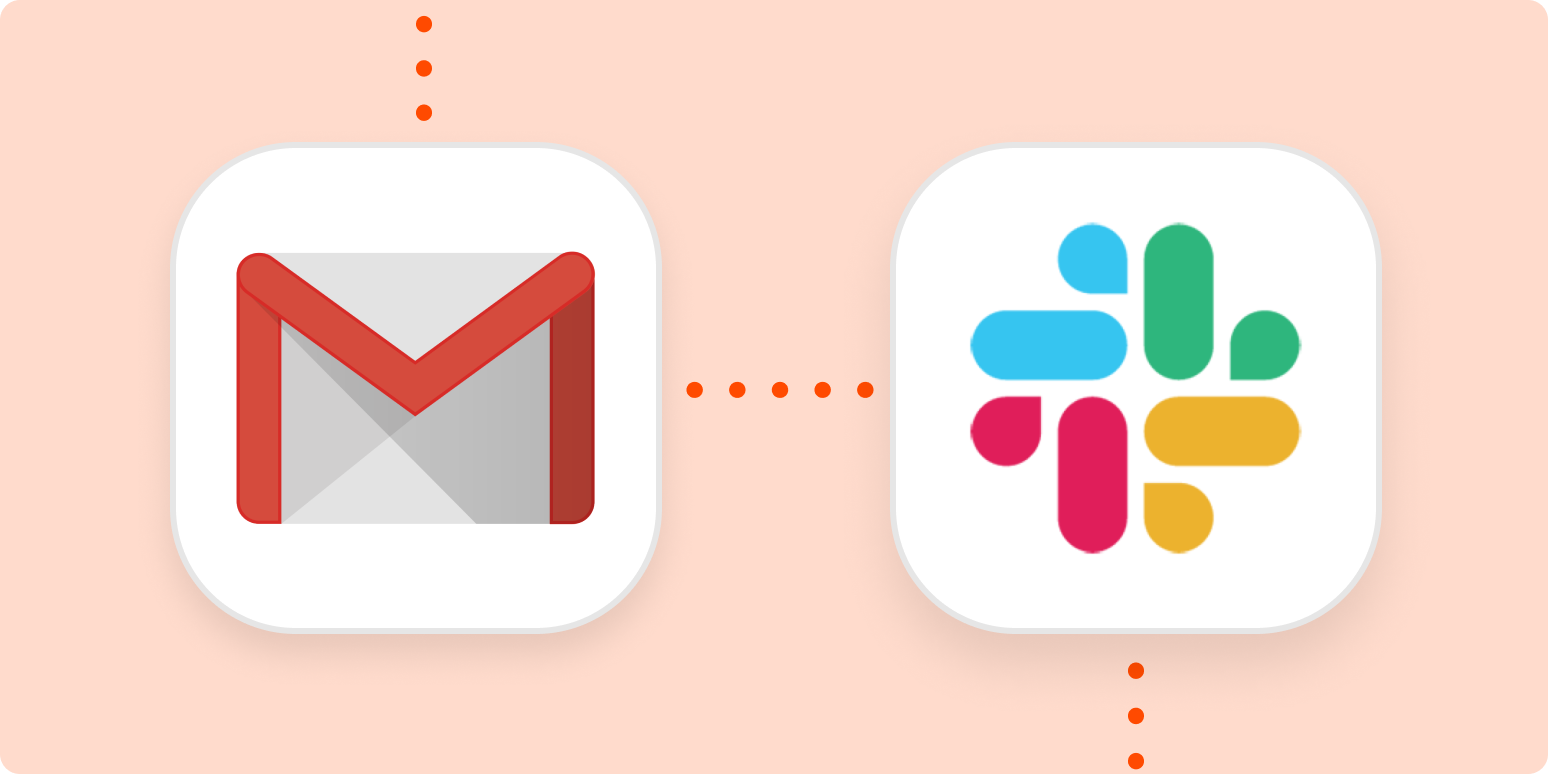Slack has replaced email for internal collaboration at many companies (thankfully). But what about when someone outside your company needs to get in touch? You probably still use Gmail for that.
If you live in Slack, however, you might not think to check your company Gmail very often. Happily, you can send emails over to any Slack channel quickly enough, allowing you and your team to stay on top of important emails. You can even discuss what the response should be before you send it.
Note: this Slack Gmail integration only works with business Gmail accounts. Free Gmail accounts are unsupported.
Push Gmail messages to a public Slack channel
Zapier lets you create automated workflows called Zaps, which send your information from one app to another. You can create your own Zap from scratch without any coding knowledge, but we also offer quick templates to get you started.
If you’d like to start with a template, click the Use this Zap button below, and you’ll be taken to the Zapier editor. You’ll need to create a Zapier account if you don’t already have one. Then, follow the directions below to set up your Zap.
Set up your Gmail trigger
First, set up your trigger—the event that starts your Zap. Search for and select Gmail as the trigger app and New Email as the trigger event. Click Continue.

Next, connect your Gmail account. Click on Choose an account… and either select an account from the dropdown menu (if you’ve connected Gmail to Zapier before) or click + Connect a new account.
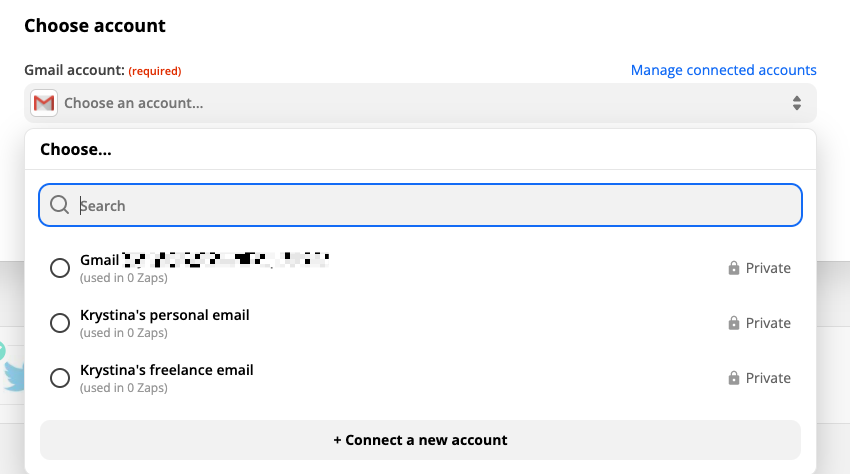
For each app you connect, Zapier will ask for a general set of permissions which allows you to be flexible with your Zaps. The only actions Zapier takes on your app accounts are those a given Zap needs to accomplish what you’ve set up.
Once you’ve connected your account, click Continue.
Next, select which label or mailbox you’d like your Zap to trigger on. If you don’t select anything, any email will trigger your Zap, including drafts.
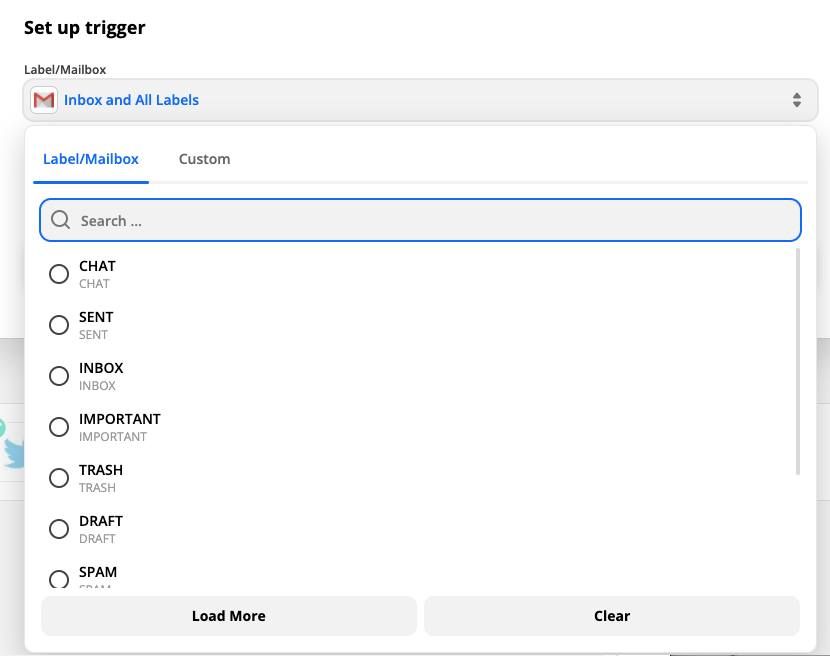
Click Continue.
Note: If you’d like to fine-tune which emails are sent to Slack, you can use the New Email Matching Search Gmail trigger instead or add a filter step once you’ve set up your Gmail trigger. Check out our guide to filters.
Now you need to test your trigger. Zapier will find a recent email in your Gmail account that matches the label or inbox you selected earlier. This will be used to set up the rest of your Zap.
Click Test trigger. Once you see that your trigger is working properly, click Continue.
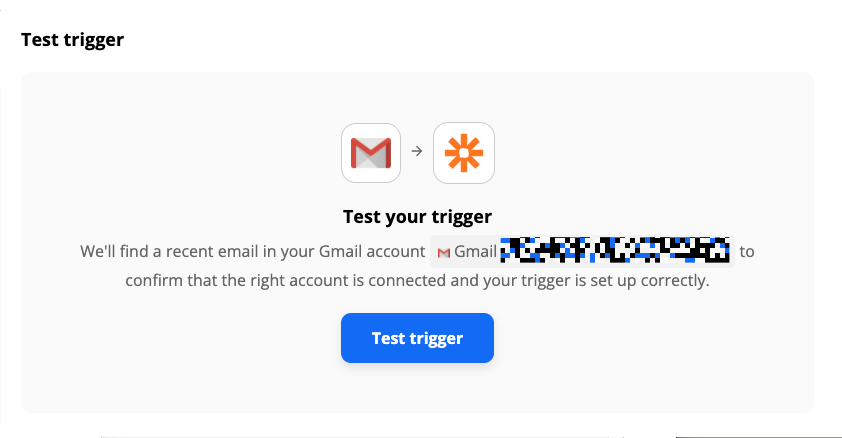
Set up your Slack action
Now let’s set up the action—the event your Zap will perform once it’s triggered. Select Slack as your action app and Send Channel Message as your action event. Click Continue.
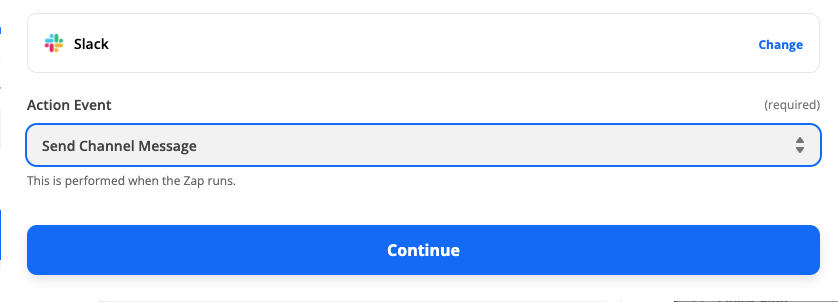
Connect your Slack account to Zapier and click Continue.
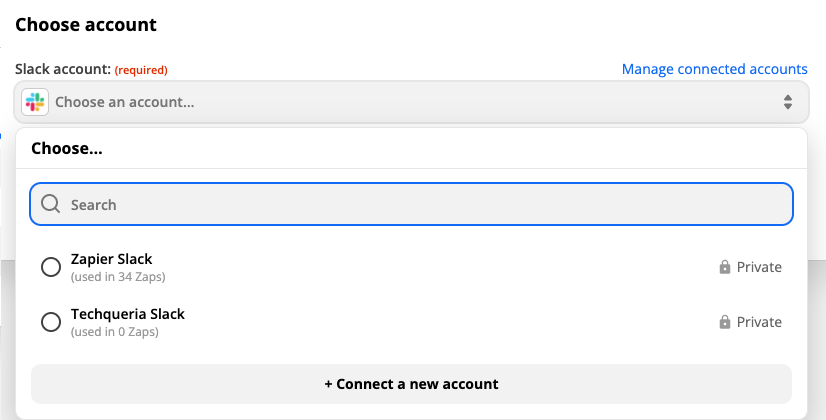
Now it’s time to customize where you want your message to go and how it will look.
Click on the dropdown under Channel to select the Slack channel you want your message to go to.
Under Message Text, you can use a mix of Slack formatting and Gmail data to customize how you want your message to look.
Whatever text you type in this field will appear the same each time your Zap runs. You may want to type in text labels for email sender, subject line, or any other notes you want.
To map information from your Gmail message, just click inside the Message Text field. You’ll see a dropdown menu of data from your Gmail trigger.
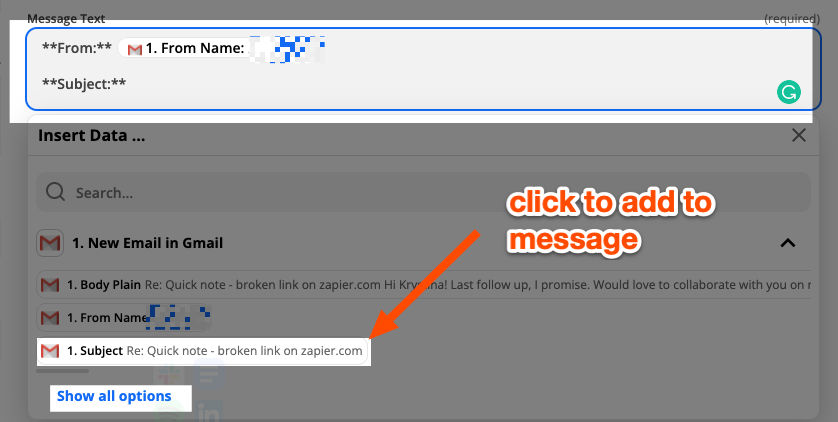
You can click on things like the email body in plain text, the sender, and the subject line to add to your message. Click on Show all options or type in the Search bar if there’s other information you want to include that isn’t listed in the first few options.
Once you’ve set up how you want your message to look, you can configure other options. You can choose to have this message sent from a bot, give it a name, and add an emoji so you can tell it apart from messages from your team.
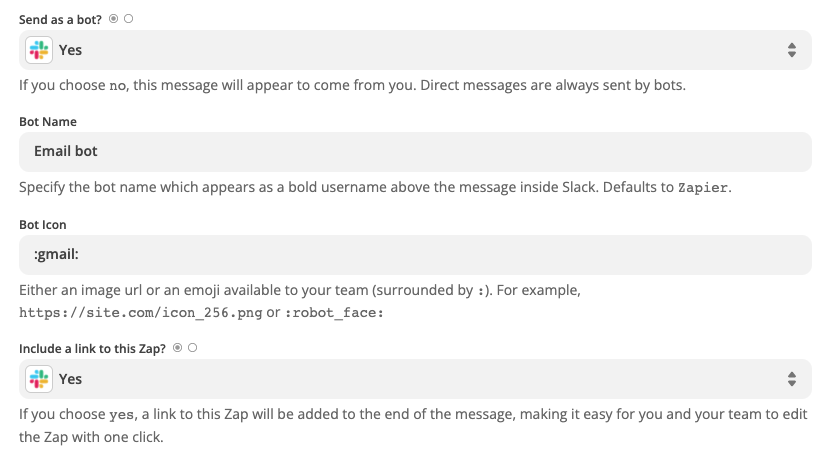
After you’ve adjusted your settings, click Continue.
Now it’s time to test your action. When you click Test & Review or Test & Continue, Zapier will send a message to Slack according to how you set up your message earlier.
It’s a good idea to test your Zap so you can check if your Slack message looks okay. (Just warn your team first, so they’re not surprised.)
If you’d rather skip the test, just click Skip Test in the top-right corner.
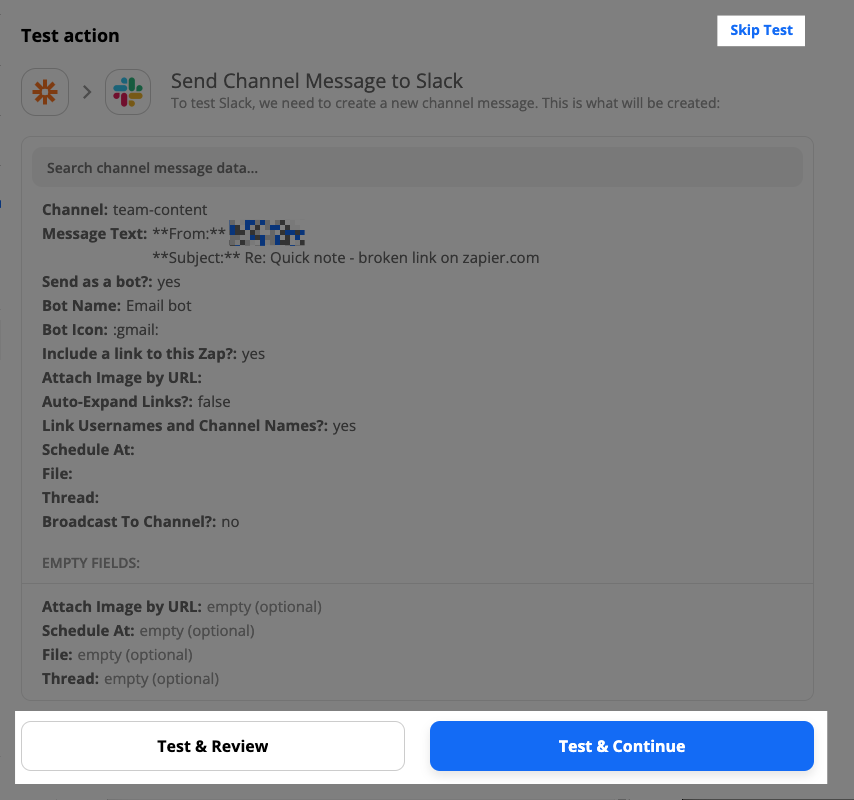
If your test looks good, don’t forget to click Turn on Zap. If something looks off, go back and tweak things until you get it just right. If you’re worried about annoying your co-workers while troubleshooting, consider using a dedicated testing channel when you’re first setting things up, then switching when you’ve got things the way you want them.
How to get private notifications about new emails
Don’t want email notifications on a public channel? That makes sense. Here’s a template for getting a private direct message in Slack when new Gmail messages come in, instead of a post in a public channel.
The process for setting everything up is the same as above. You’ll be asked to sign in to Gmail and Slack, then allowed to customize things if you want.
This piece was originally published on November 8, 2019, written by Justin Pot. It was substantially updated in December 2021, by Krystina Martinez.
[adsanity_group align=’alignnone’ num_ads=1 num_columns=1 group_ids=’15192′]
Need Any Technology Assistance? Call Pursho @ 0731-6725516

